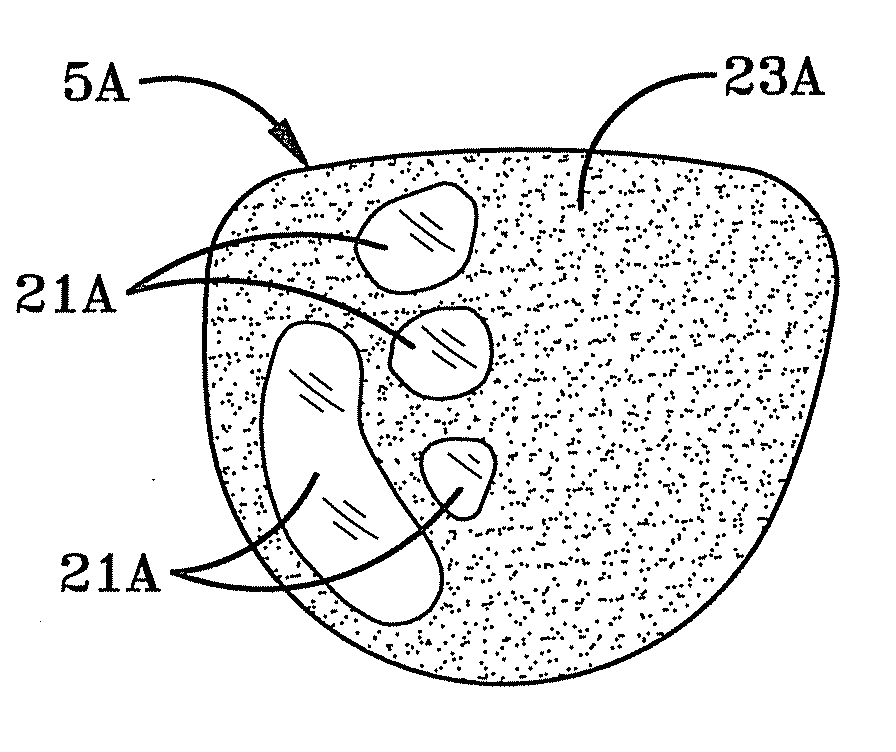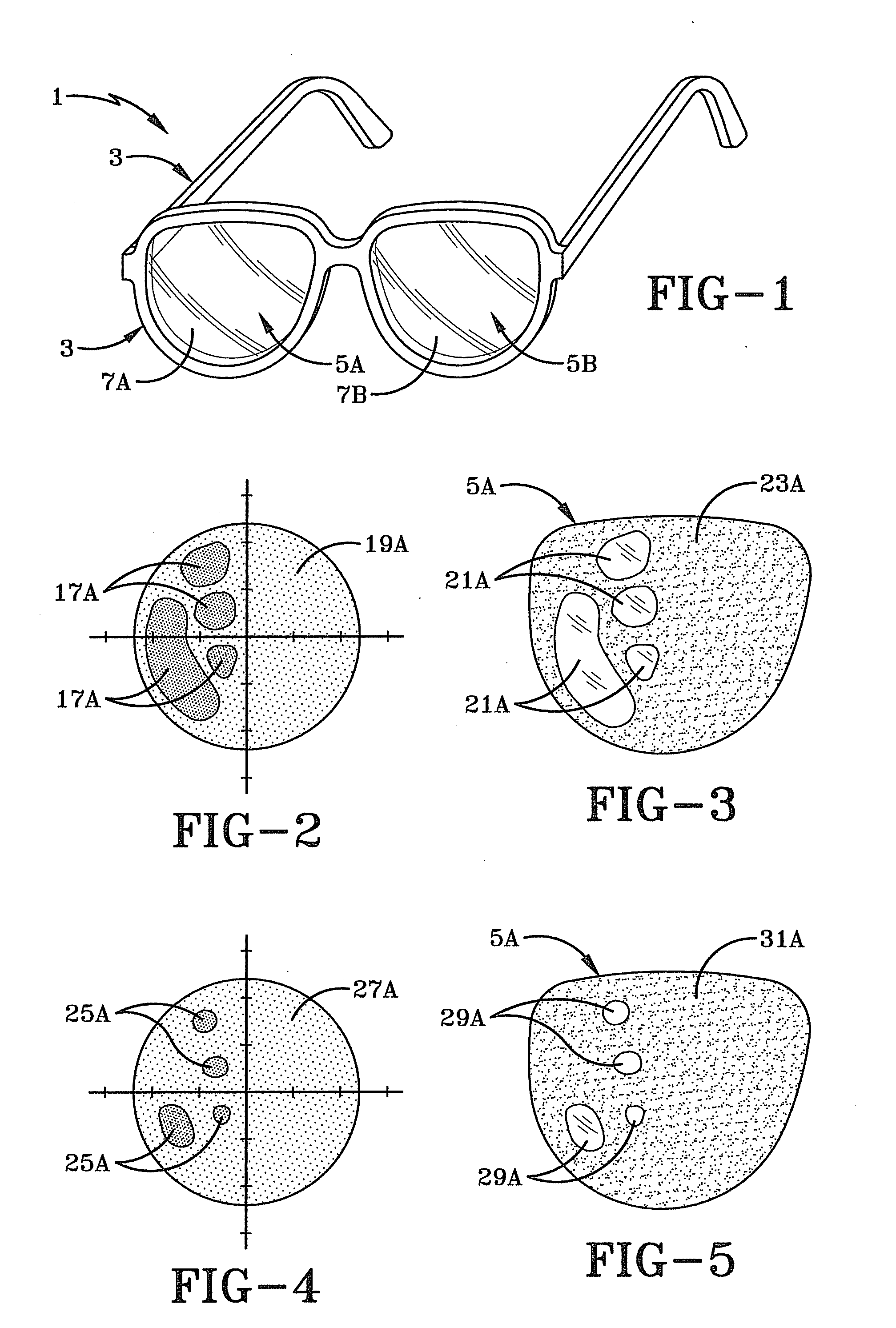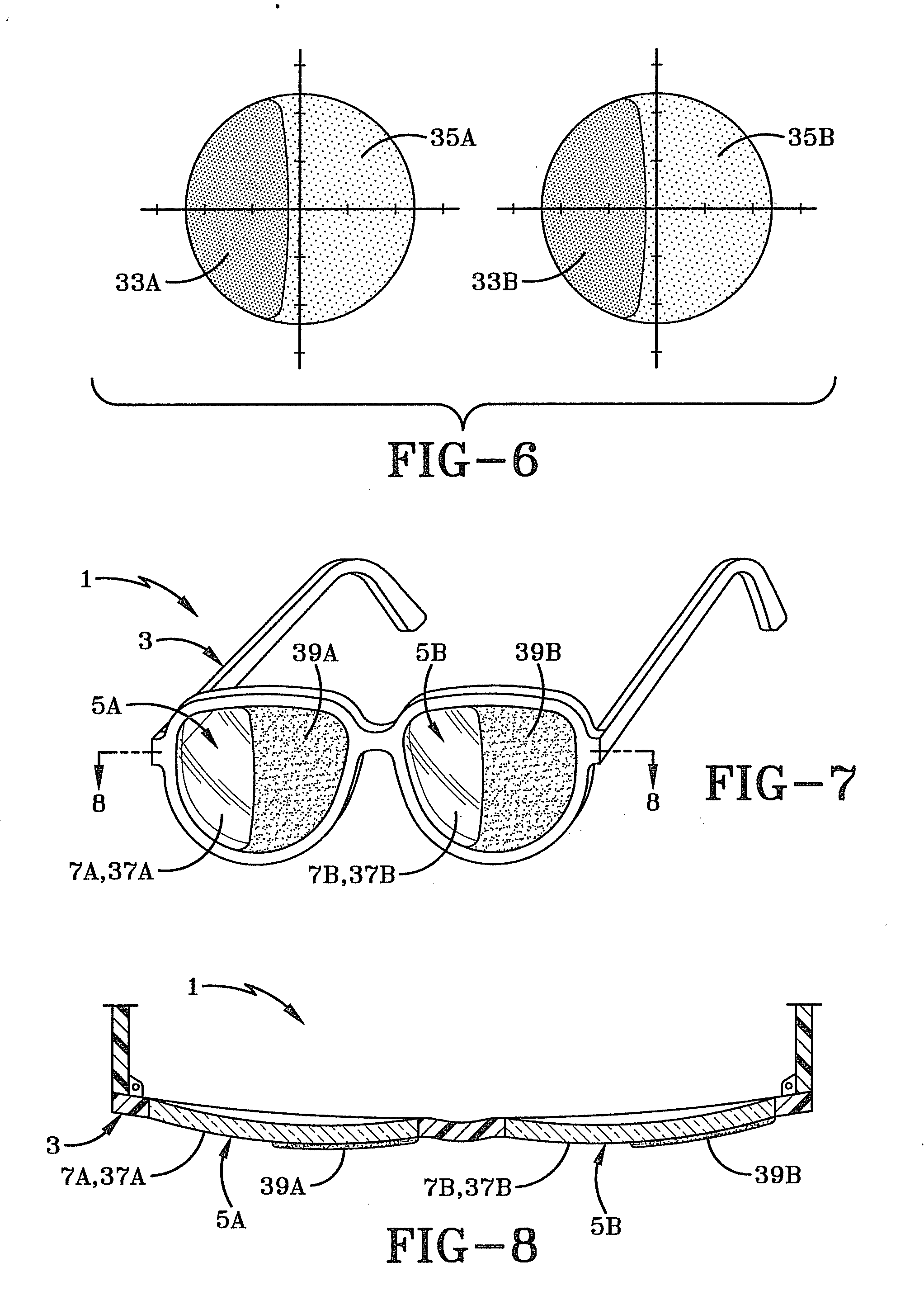System and method for rehabilitating visual defects
- Summary
- Abstract
- Description
- Claims
- Application Information
AI Technical Summary
Benefits of technology
Problems solved by technology
Method used
Image
Examples
Embodiment Construction
[0026]As shown in FIGS. 1-8, the preferred embodiment of the present invention incorporates a patient specific lens system 1 with a corresponding treatment method to alter how visual information is passed from the patient's eyes to the patient's brain for cognitive recognition and use.
[0027]Lens system 1 used in the present invention is comprised generally of a common off-the-shelf eyeglass frame 3, with a pair of lenses 5A and 5B held therein. If the patient previously required a particular lens prescription before the brain trauma which led to the visual impairment, it is highly desirable that lenses 5A and 5B also incorporate this particular prescription for the patient. Each lens 5A and 5B is generally transparent and includes an outer surface 7A and 7B, respectively. Lens system 1 is preferably the patient's own eyeglasses for everyday use. Furthermore, while lens system 1 is described as being directed to eyeglasses, one would readily understand that only minor modifications i...
PUM
 Login to View More
Login to View More Abstract
Description
Claims
Application Information
 Login to View More
Login to View More - R&D
- Intellectual Property
- Life Sciences
- Materials
- Tech Scout
- Unparalleled Data Quality
- Higher Quality Content
- 60% Fewer Hallucinations
Browse by: Latest US Patents, China's latest patents, Technical Efficacy Thesaurus, Application Domain, Technology Topic, Popular Technical Reports.
© 2025 PatSnap. All rights reserved.Legal|Privacy policy|Modern Slavery Act Transparency Statement|Sitemap|About US| Contact US: help@patsnap.com



